The Freedom Tunnel
The Freedom Tunnel
Manhattan, New York - 2012
Manhattan, New York, 2012
Manhattan, New York, 2012
Steve Duncan is an individual who knows the sensation of being somewhere he's not supposed to be almost better than anyone on the planet. Whilst visiting New York we were introduced to this urban historian, subterranean explorer and photographer, who is well known in the underworld of metropolitan reconnaissance. Steve is most at home with a flashlight strapped to his forehead, popping manhole covers, climbing bridges, exploring subways, jimmying doors open and saying things like, “don’t step on that rail or you’ll die”, “I found a dead body right here once” and, “that’s weird, there didn’t use to be an alarm in this building”.
The following series of photographs are from one particular outing with him into what is colloquially known as 'The Freedom Tunnel' – named after American graffiti artist Chris Freedom Pape, whose iconic works still grace the walls. The tunnel’s history of housing a homeless shantytown community was exposed and largely popularised through the film 'Dark Days', created by tunnel resident and documentary filmmaker, Marc Singer. After the tunnel’s recommissioning in the 1990s, the skeletal buildings were bulldozed, its inhabitants cleared out and the tunnel’s original use as a domestic rail artery restored.
Today, the tunnel is accessed by a small recess between concrete and dirt in an Upper Manhattan park. We met Steve and he pointed us towards the unassuming knoll and told us to make sure no one was looking as we made our way up it. As soon as we pushed our bodies through the gap we were forced onto a cascading mountain of earth, debris and broken concrete. After sliding down in ankle-deep rubble, checking we hadn’t damaged ourselves or our camera equipment and regaining our composure – we realised we had arrived in a huge, cavernous concrete arena.
The enduring indications of the life that once thrived below the surface of Manhattan were restricted to occasional unoccupied pits of rubbish, miscellaneous possessions and dirty blankets. The only person we could locate still living down there resided below the tracks in his own multi-levelled concrete catacomb – complete with a hanging television, shelves of food and a full sleeping arrangement. It was quite a surreal experience, knocking on a tightly screwed manhole to see if anyone was home, to then hear a muffled human voice respond and watch the cover slowly unscrew itself from below.
As the minutes without incident increased, the confidence that slowly permeated our group was intermittently interrupted by the thundering of interstate trains. Luckily their arrival was telegraphed by echoing horns, at which point Steve would yell at us to either hide behind a wall or “quickly curl up into a ball and look like a lump of rubbish”.
The main tunnel, whose seemingly never-ending curve ran around as far as the eye could see, was punctuated with evenly spaced shafts of light from the street grates above. These diffused reminders of our clandestine location not only created a wonderfully polarised photographic environment but also allowed a vast, evenly spaced street art gallery to periodically populate the entire tunnel. With no pockets of light going unutilised, a lot of the works they illuminated included some of the oldest and arguably most famous pieces, or remnants of pieces, of graffiti in America.
After a good few hours of walking, the conclusion of the bend confronted us with a blinding light at the end of the tunnel. Like messengers from the other side, we emerged squinting, scratched, damp and dusty – but edified by a glimpse into New York's subterranean history.
Steve Duncan is an individual who knows the sensation of being somewhere he's not supposed to be almost better than anyone on the planet. Whilst visiting New York we were introduced to this urban historian, subterranean explorer and photographer, who is well known in the underworld of metropolitan reconnaissance. Steve is most at home with a flashlight strapped to his forehead, popping manhole covers, climbing bridges, exploring subways, jimmying doors open and saying things like, “don’t step on that rail or you’ll die”, “I found a dead body right here once” and, “that’s weird, there didn’t use to be an alarm in this building”.
The following series of photographs are from one particular outing with him into what is colloquially known as 'The Freedom Tunnel' – named after American graffiti artist Chris Freedom Pape, whose iconic works still grace the walls. The tunnel’s history of housing a homeless shantytown community was exposed and largely popularized through the film 'Dark Days', created by tunnel resident and documentary filmmaker, Marc Singer. After the tunnel’s recommissioning in the 1990s, the skeletal buildings were bulldozed, its inhabitants cleared out and the tunnel’s original use as a domestic rail artery restored.
Today, the tunnel is accessed by a small recess between concrete and dirt in an Upper Manhattan park. We met Steve and he pointed us towards the unassuming knoll and told us to make sure no one was looking as we made our way up it. As soon as we pushed our bodies through the gap we were forced onto a cascading mountain of earth, debris and broken concrete. After sliding down in ankle-deep rubble, checking we hadn’t damaged ourselves or our camera equipment and regaining our composure – we realised we had arrived in a huge, cavernous concrete arena.
The enduring indications of the life that once thrived below the surface of Manhattan were restricted to occasional unoccupied pits of rubbish, miscellaneous possessions and dirty blankets. The only person we could locate still living down there resided below the tracks in his own multi-levelled concrete catacomb – complete with a hanging television, shelves of food and a full sleeping arrangement. It was quite a surreal experience, knocking on a tightly screwed manhole to see if anyone was home, to then hear a muffled human voice respond and watch the cover slowly unscrew itself from below.
As the minutes without incident increased, the confidence that slowly permeated our group was intermittently interrupted by the thundering of interstate trains. Luckily their arrival was telegraphed by echoing horns, at which point Steve would yell at us to either hide behind a wall or “quickly curl up into a ball and look like a lump of rubbish”.
The main tunnel, whose seemingly never-ending curve ran around as far as the eye could see, was punctuated with evenly spaced shafts of light from the street grates above. These diffused reminders of our clandestine location not only created a wonderfully polarised photographic environment but also allowed a vast, evenly spaced street art gallery to periodically populate the entire tunnel. With no pockets of light going unutilised, a lot of the works they illuminated included some of the oldest and arguably most famous pieces, or remnants of pieces, of graffiti in America.
After a good few hours of walking, the conclusion of the bend confronted us with a blinding light at the end of the tunnel. Like messengers from the other side, we emerged squinting, scratched, damp and dusty – but edified by a glimpse into New York's subterranean history.
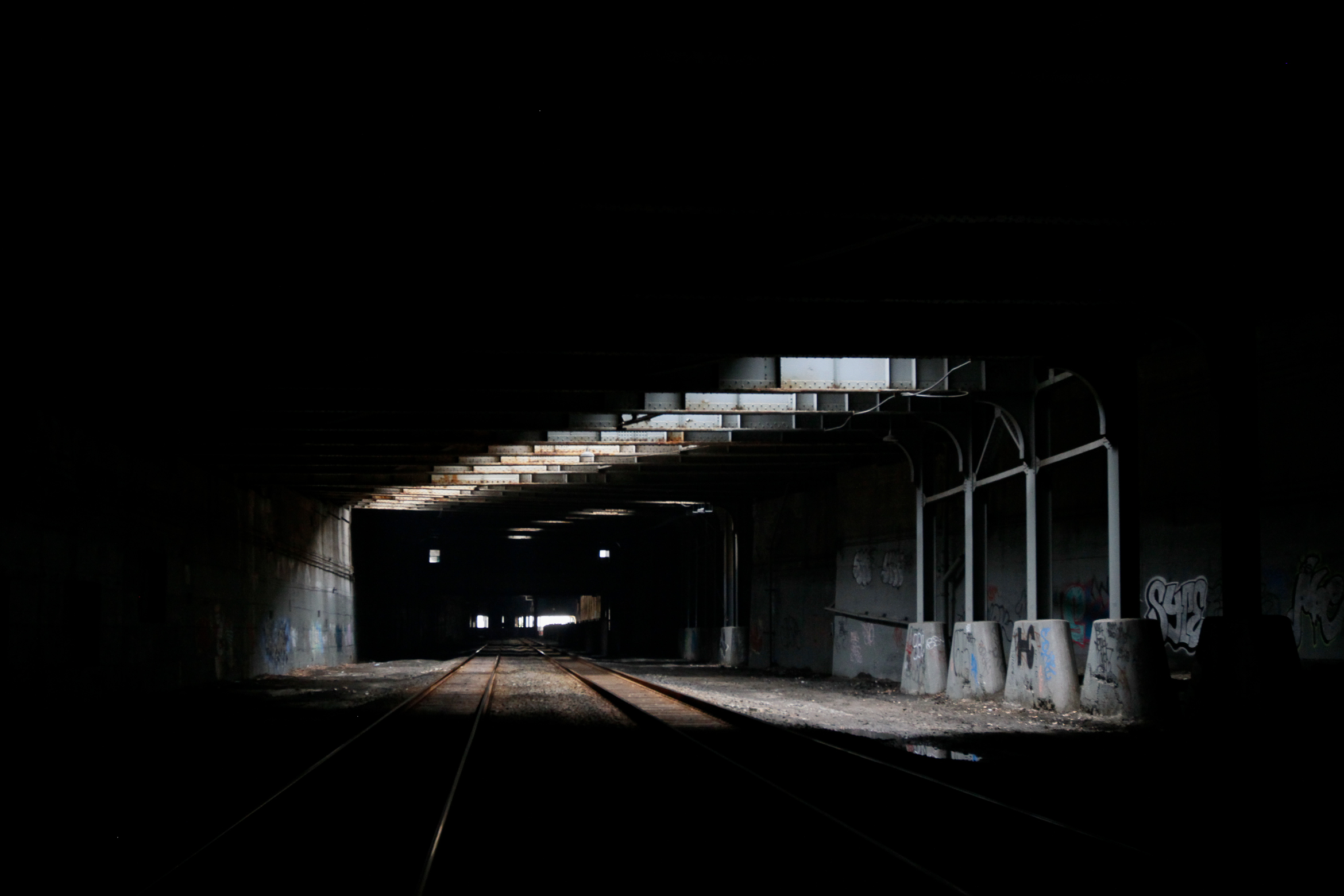
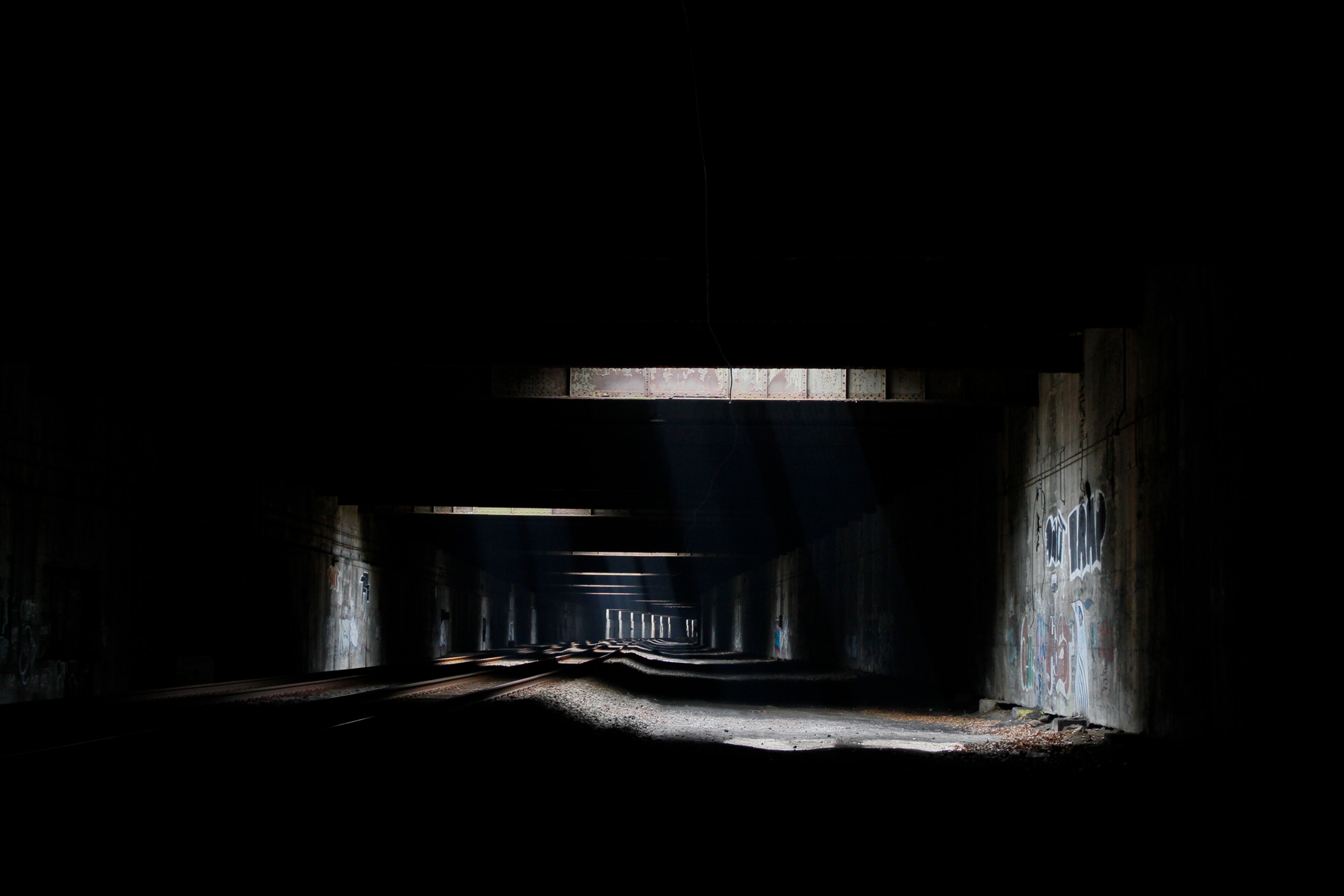
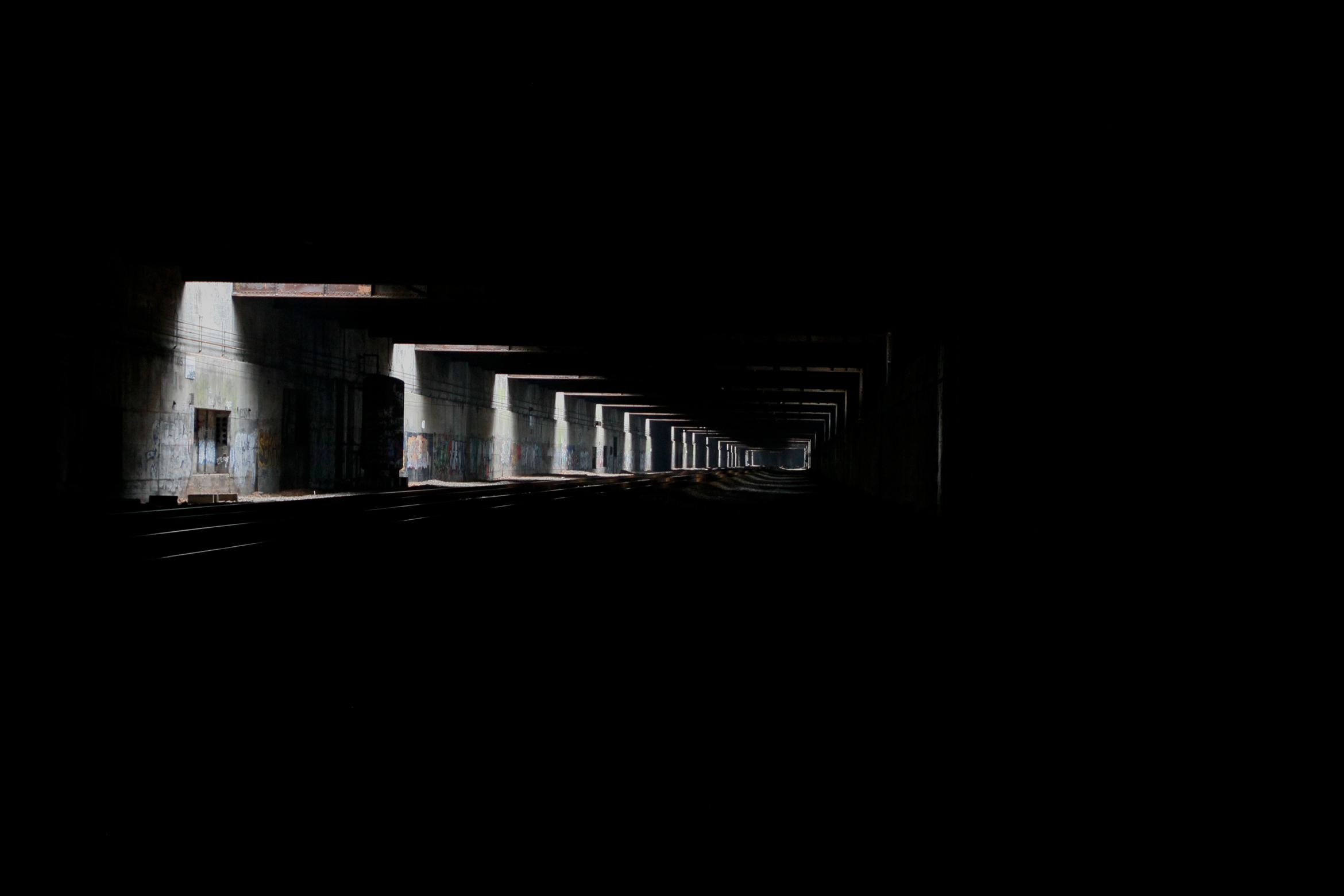
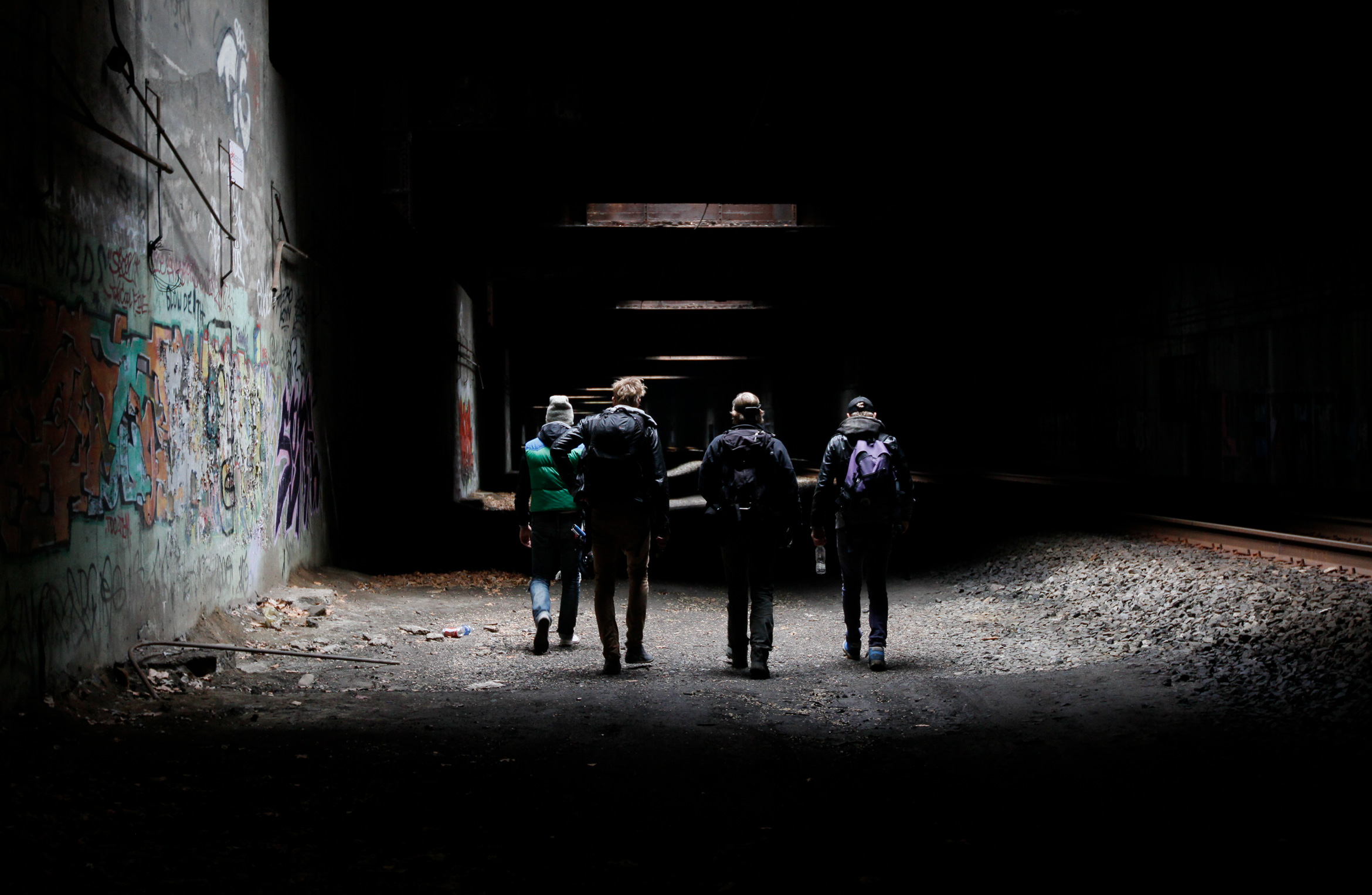
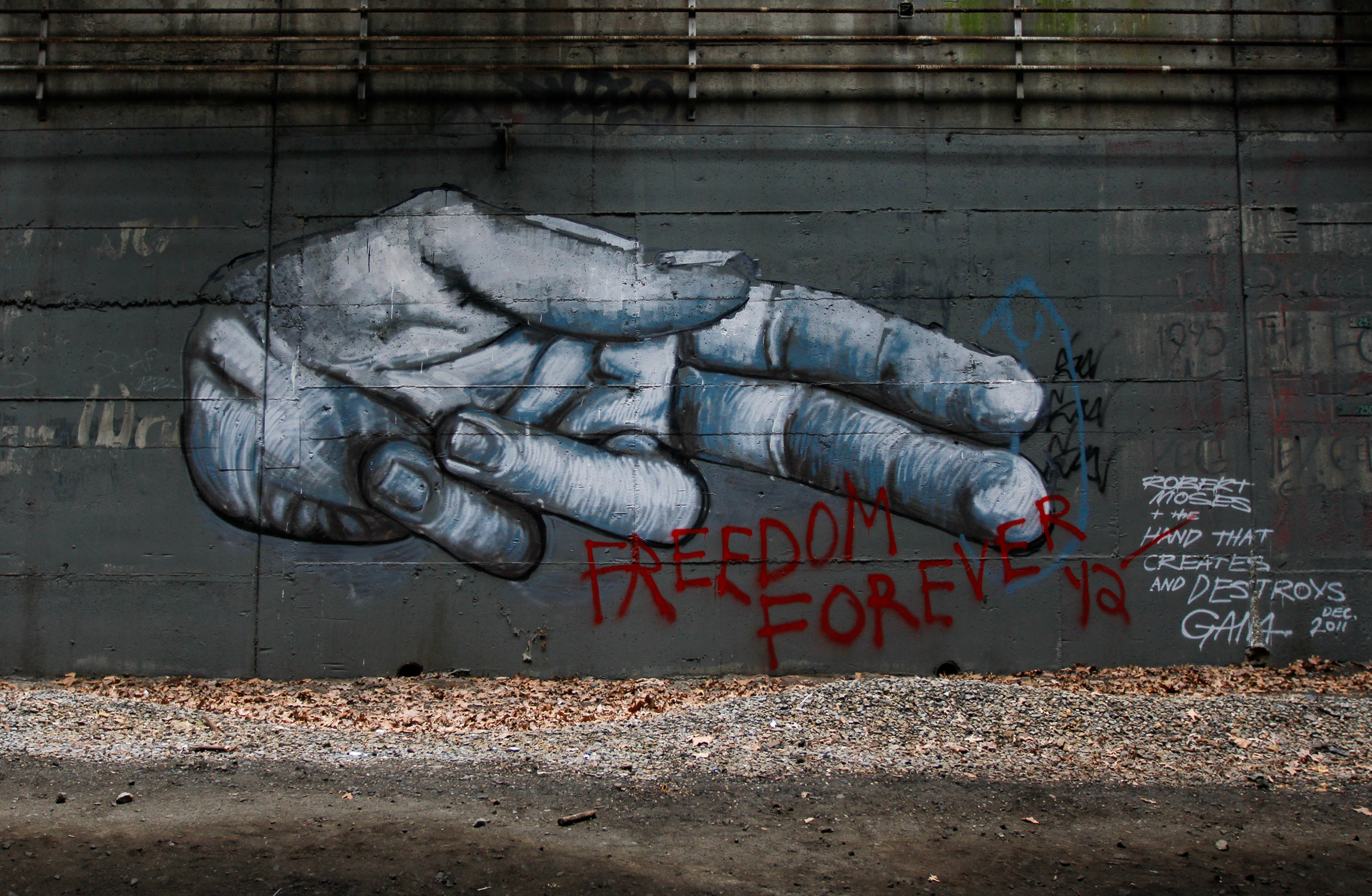
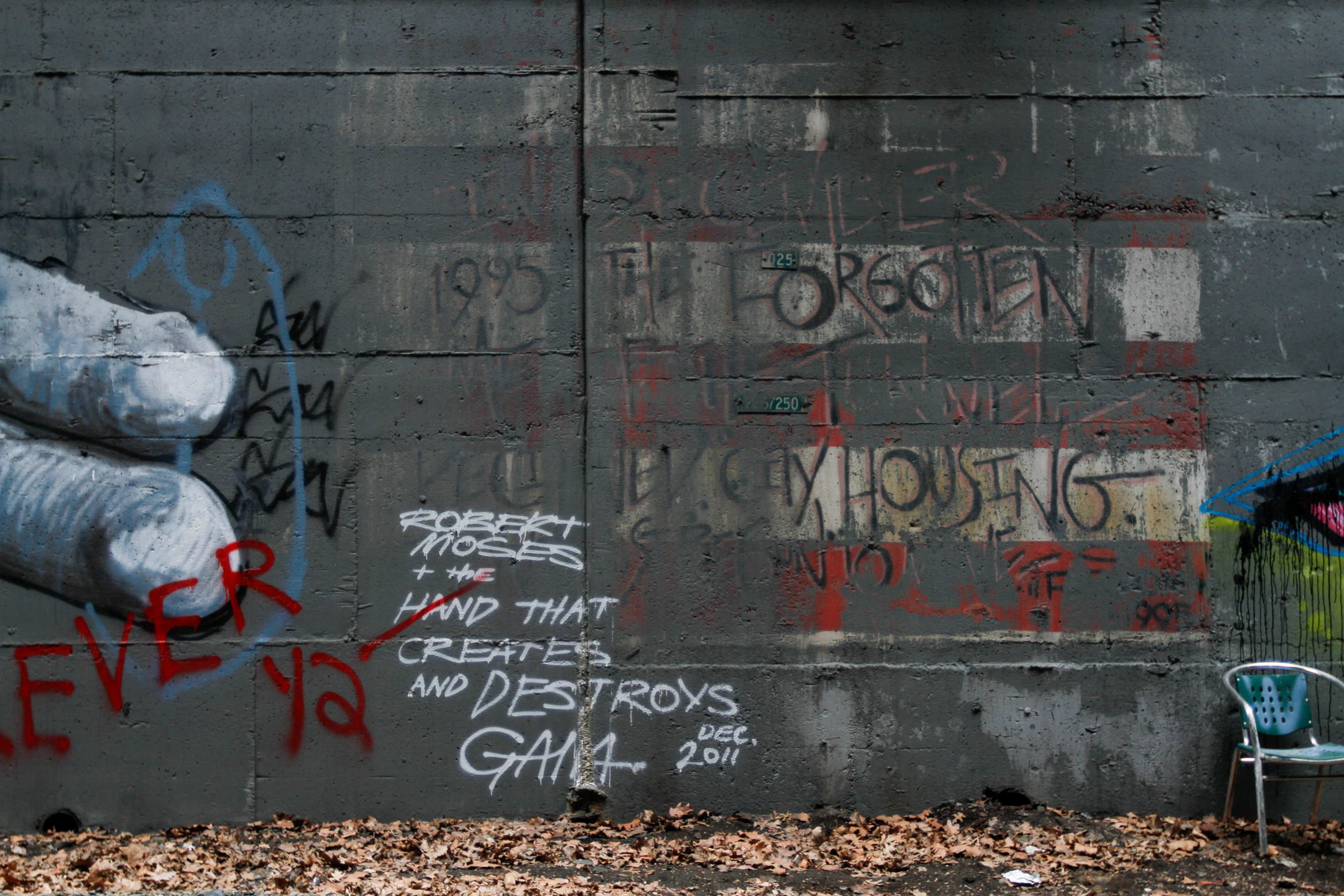
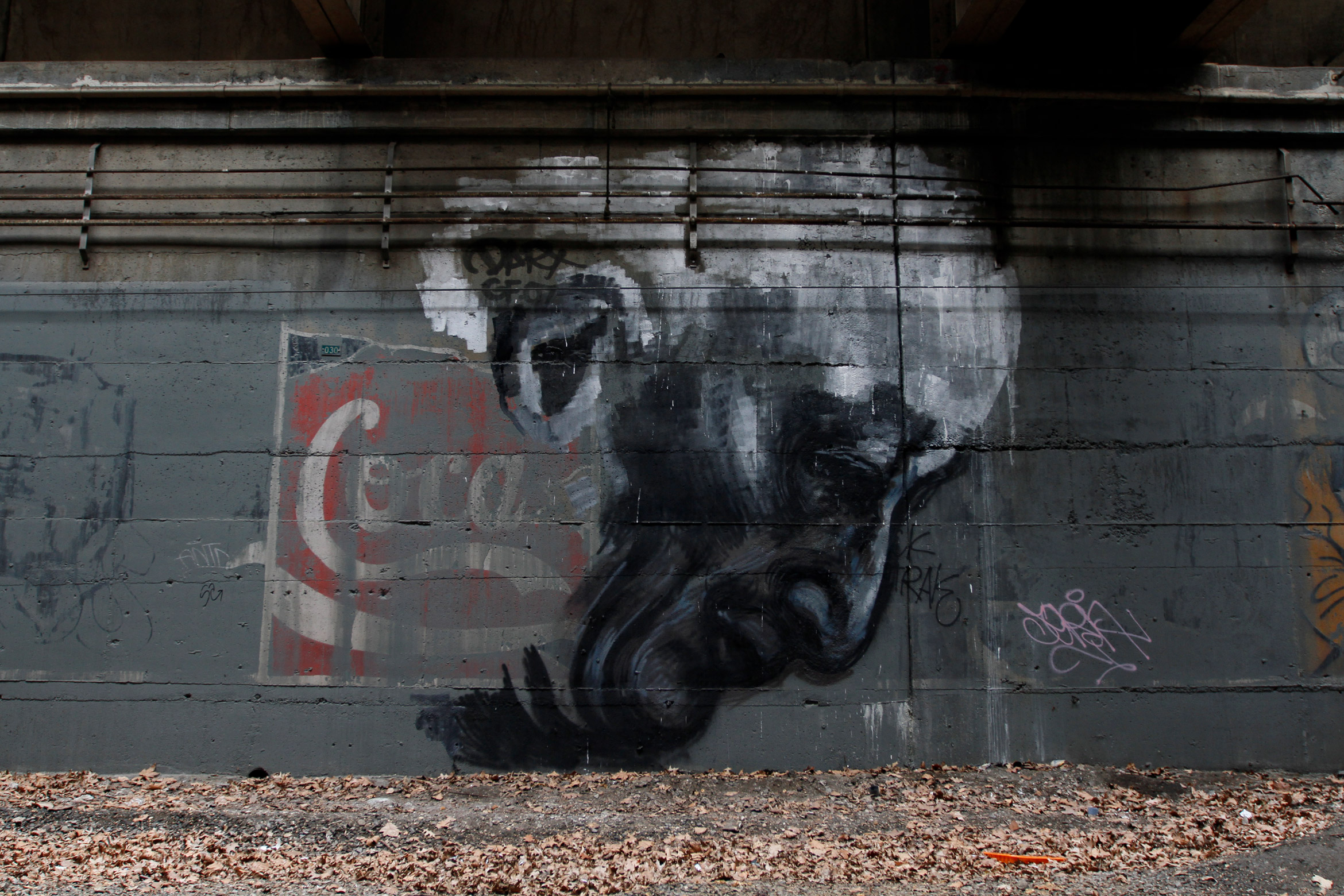


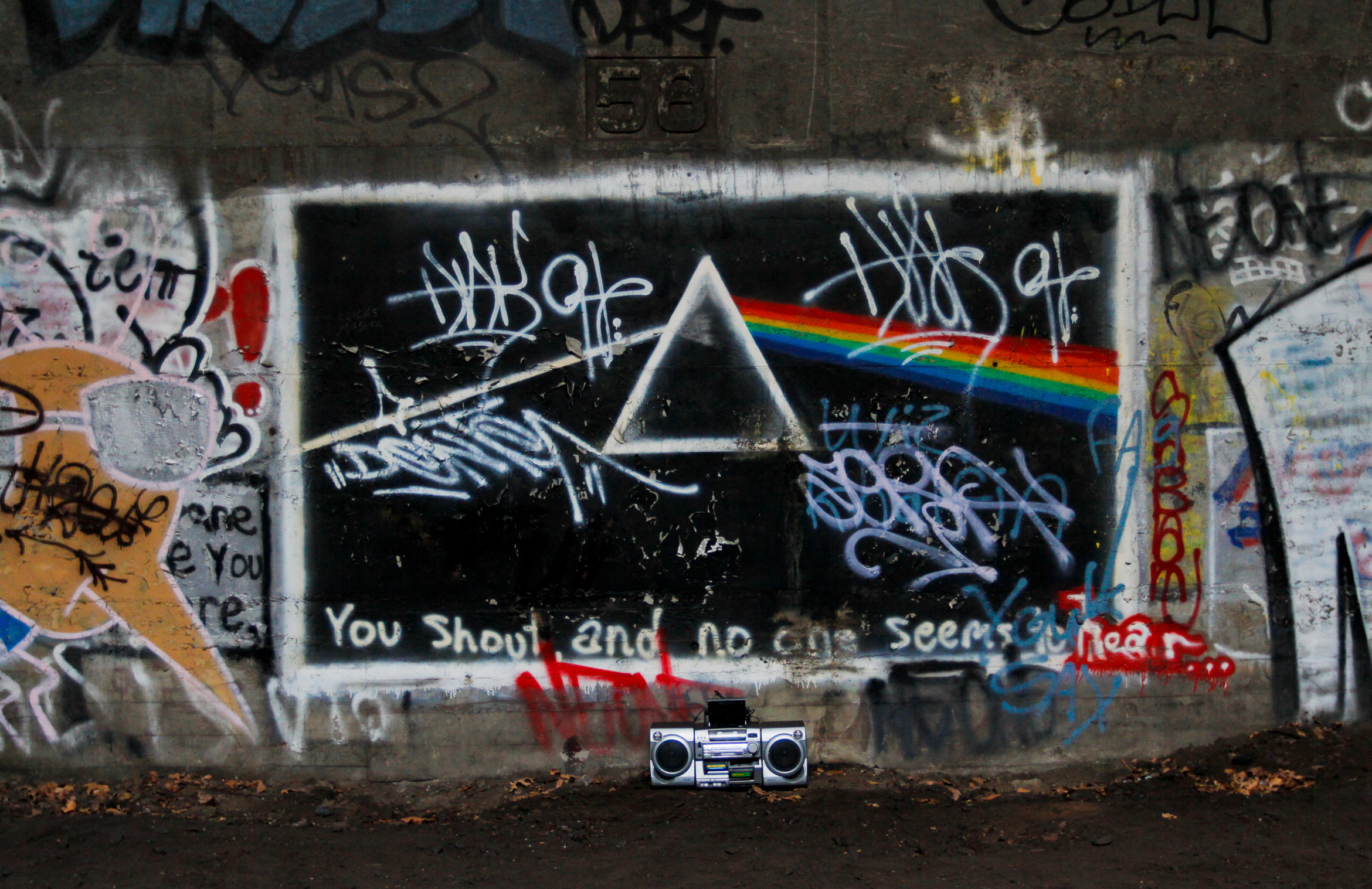
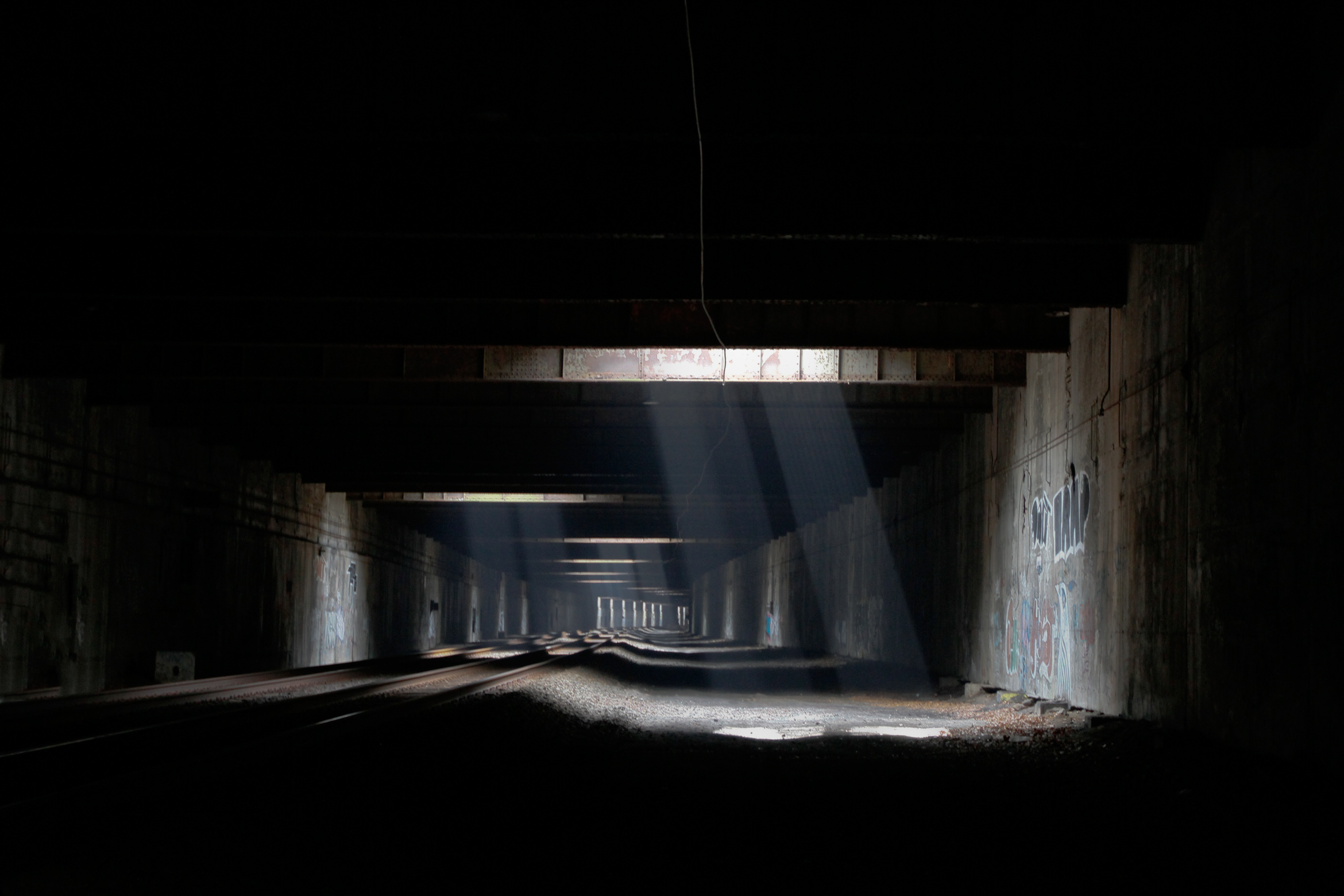
James Watkins
James Watkins
Artist
Artist
Artist
+ 64 211 64 1877
jamesterencewatkins@gmail.com
Instagram
@james_watkins
+ 64 211 64 1877
jamesterencewatkins@gmail.com
Instagram
@james_watkins